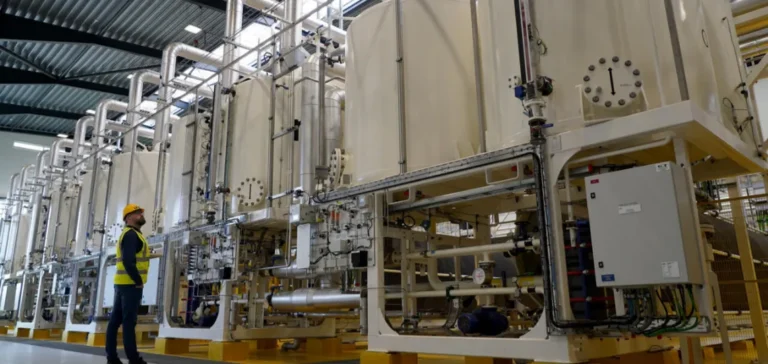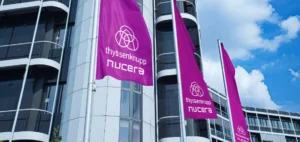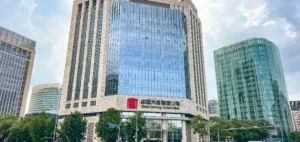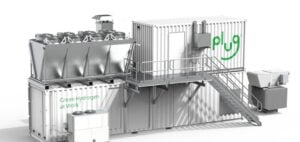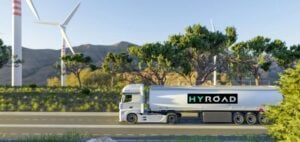Denmark has launched one of the few low-carbon hydrogen plants currently in operation in Europe, located in Fredericia. Developed by the Danish company Everfuel in partnership with the investment fund Hy24, the HySynergy I project has a production capacity of 20 MW. The plant produces eight tons of hydrogen per day using electrolyzers powered by renewable energy, primarily to supply the nearby Crossbridge Energy refinery and other industrial clients in Germany.
A Platform Designed for Expansion
The site is based on eight alkaline electrolyzers supplied by the Norwegian company Nel and integrates compression equipment from Howden and an energy conversion infrastructure developed by Danfoss. Everfuel holds a 51% stake in the project, while Hy24 owns 49%. Due to growing demand, Everfuel envisions expanding the site, with the potential to reach a capacity of 350 MW in the future. The first hydrogen delivery to the Crossbridge Energy refinery took place in February 2025, marking a key milestone in the initial phase of the project.
The site’s infrastructure is designed for gradual development, depending on industrial demand and regulatory support. The goal is to reach several industrial capacity milestones in the medium term, with a progressive increase in output.
A Developing European Market
Despite the ambitions of several European countries, large-scale low-carbon hydrogen production is still limited. In addition to Fredericia, several other low-carbon hydrogen production projects are operational in Europe, such as Refhyne in Germany, Puertollano in Spain, and Harjavalta in Finland. While these projects show progress, they remain far from the large-scale deployment targets, especially in terms of gigawatt-level production.
According to the International Energy Agency (IEA), low-carbon hydrogen production capacity could quintuple by 2030 compared to 2024, but it remains below the initial projections for that period. The IEA highlights that despite increasing investments in the sector, obstacles remain, particularly in terms of production costs and project delays.
The Regulatory Challenges: RED III
The European Renewable Energy Directive (RED III), adopted in 2023, sets ambitious targets for renewable hydrogen. The goal is to ensure that 42% of hydrogen used in industrial applications comes from renewable sources by 2030, with 60% by 2035. The implementation of these targets could accelerate the structuring of the hydrogen market, particularly in refineries, which are looking to replace grey hydrogen (produced from fossil fuels) with low-carbon hydrogen.
Some industrial groups have already signed long-term contracts for significant volumes of renewable hydrogen by 2030, signaling a shift in the energy and transportation sectors.
The Strategic Role of Danish Offshore Wind and Power-to-X Projects
Denmark is also betting on the development of offshore wind to power its Power-to-X projects, a technology that converts renewable electricity into synthetic fuels, including hydrogen. This strategic approach strengthens the country’s competitiveness in the hydrogen sector, particularly due to the existing local infrastructure supporting these projects.
The hydrogen produced in Fredericia will be partly exported, especially to Germany. A cross-border pipeline project between Denmark and Germany is under development for 2028. This project aims to support the growing demand for renewable hydrogen in Germany’s industry, further consolidating a transnational supply chain.


